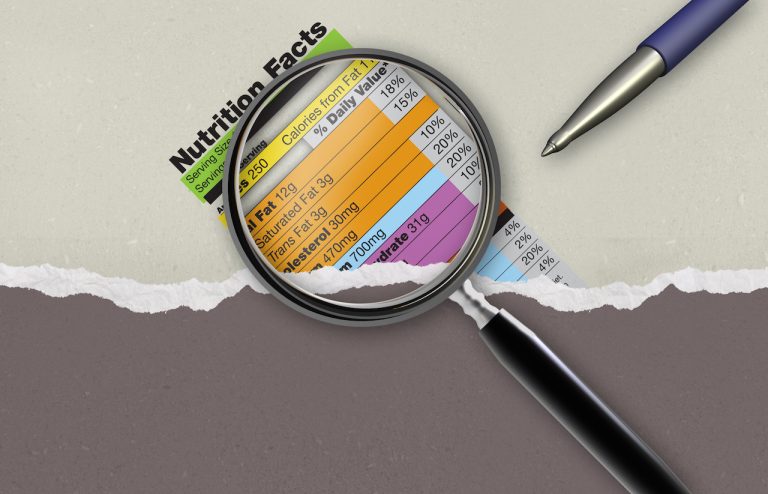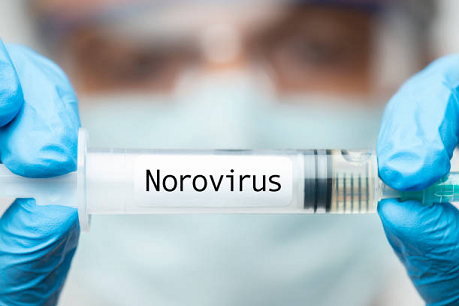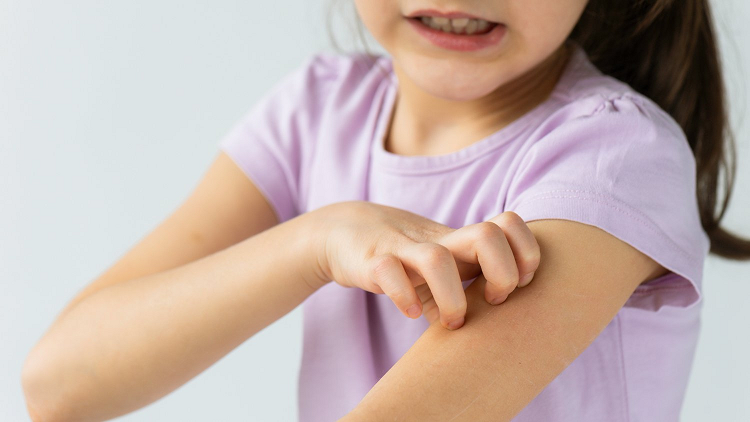Opinion | On May 22, 2020, the U.S. Food and Drug Administration (FDA) issued a public comment providing new guidance that will relax the labeling requirements on packaged food to allow food companies more flexibility during the COVD-19 pandemic. Companies selling food are now allowed to make minor changes to the formulation of food products without being required to change the product label, raising the risks for serious food allergies.
FDA Made Change Without Public Comment
The FDA’s stated goal of changing food labeling requirements is to minimize the effects of food supply chain disruption and meet consumer demand.1 A departure from the standard practice of first taking public comment before issuing new guidance to companies selling products that carry health risks, this guidance by the FDA took effect immediately without public comment.2
The FDA is the oldest U.S. government consumer protection agency.3 The Federal Food, Drug, Cosmetic Act granted the FDA the authority to protect consumers from unsafe products by requiring that most prepared and packaged foods be accurately labeled by the manufacturer.4
The FDA states;
Consumers use the ingredient list to make purchasing decisions and determine whether a food contains an ingredient they want (e.g., whole grains) or ones they do not want (e.g., due to allergies). Without this ingredient information, consumers would not be able make nutrition-based food decisions, as well as avoid ingredients for health or other reasons.5
Protecting Food Company Profits But What About Safety?
However, during the coronavirus pandemic, it appears that the FDA has shifted its responsibility from protecting consumers to helping food companies protect their profits from any lost business stemming from potential disruption of the food supply chain.6
The guidelines provide that manufacturers may substitute a minor ingredient in a recipe without changing the label when the substituted ingredient:
- is not known to cause adverse health effects such as food allergens, gluten, sulfites;
- is generally less than 2 percent of the product weight;
- is not be a major product ingredient;
- is not a characterizing ingredient;
- does not affect the nutrient content or health claims on the product label; and does not have a significant impact on the finished product.7
A label does not need to be changed, for example, when certain oils that contain a similar type of fat have been substituted in a recipe, such as canola oil for sunflower oil, or when an oil is highly refined and does not pose a risk for an allergic reaction according to the FDA.8 However, many people have allergic reactions to highly refined products derived from one of the top eight allergens such as such as peanut oil or soy lecithin.9
The FDA guidance provides that minor formulation changes may be made as long as the substituted ingredient,
does not cause adverse health effect “(including food allergens, gluten, sulfites, or other foods known to cause sensitivities in some people, for example, glutamates).10
The FDA does not define what ingredients are considered to cause an “adverse health effect.”11 Food allergies are unique in that an individual may react to ingredients the FDA does not consider allergens. According to the Food Allergy Research and Education (FARE) more than 170 foods have been reported to cause allergic reactions.12
Cross Contamination A Safety Issue
The guidance states that food companies must continue to list the top 8 allergens including peanuts, tree nuts, milk, eggs, soy, wheat, fish, and crustacean shellfish on the package ingredient list. However, there is still cause for concern for those allergic to the top eight allergens even when other ingredients are substituted because of cross-contamination.
Take the example of a milk chocolate bar that carries the advisory statement: “Made on equipment that also processes almonds.” If the manufacturer decides to substitute peanut flour for almond flour in another product in the same line, that advisory statement may be rendered incorrect or incomplete.13
Manufacturers are not required to list the substituted ingredients of their food products on labels, or on their website or a central FDA website. The only way to find out if an ingredient was substituted and what it was substituted for is to call the manufacturers for every food product.14
32 Million Americans With Food Allergies
Approximately 32 million American live with a food allergy.15 In 2018, it was estimated that eight percent or one in 13 children and 1 in 10 adults had a food allergy.16 According to the CDC, food allergies increased 50 percent between 1997 to 2011. Between 1997 and 2008, peanut and tree nut allergies have tripled in children in the U.S.17
Food allergy reactions range from mild such as a few hives to life threatening anaphylactic reactions. In the U.S each year, allergic reactions to food send 200,000 people to seek emergency medical care.18
Allergic Reactions Are Life Threatening
Life threatening allergic reactions require the immediate use of an epi-pen within minutes of the start of symptoms of a reaction. Medical professionals instruct that anyone having an anaphylactic reaction immediately inject an epi-pen and then go to the hospital. While going to the hospital after an allergic reaction is always a cause for concern, it is an even more frightening experience during the COVID-19 crisis.
In order to protect their children from the risk of an allergic reaction, food allergy parents know exactly what packaged food their child can eat and what ingredients they need to stay away from. Many families have learned the hard way to have a list of safe snacks and not to vary their food choices. Even a small change in the type of spice or kind of oil used in a recipe could cause a child to react negatively or even go into anaphylactic shock.
Food Allergies of Special Concern in Autism Community
Food allergies are of special concern for parents of very young children or non-verbal children with autism, who may not be able to effectively communicate that they are having an allergic reaction.
These new guidelines will particularly affect the autism community. One in 54 children in the United States have autism. Studies have shown that children with autism are five times as likely as other children to have difficult eating habits such as only eating a narrow range of food items.19
Children with autism have an increased risk of food allergies.20 According to a study, 11.25 percent of children with autism had a food allergy compared to 4.25 percent of children without autism.21 22
Substituting ingredients in products without making corresponding changes to the label is especially concerning with nonverbal children on the autism spectrum, who may not be able to effectively communicate a reaction to foods they were once able to tolerate.
New Food Labeling Guidelines Could Remain in Effect Long Term
The FDA has stated that the new guidelines were issued in response to the COVD-19 pandemic. However, there is no set end date and these changes may be extended or renewed by the Secretary of Health and Human Services if food companies say they need additional time to restock supply chains.
Although the new guidelines went into effect immediately, without first taking public comments, public comments may be submitted at any time for FDA’s consideration.
The FDA provides,
… upon termination of the public health emergency, FDA intends to consider and publicly communicate regarding whether an extension, in whole or in part, is warranted, based on comments received to this guidance and our experience with its implementation.23
Submitting Written Comments to FDA on Food Labeling
You can submit written comments to the Dockets Management Staff (HFA-305), Food and Drug Administration, 5630 Fishers Lane, Rm. 1061, Rockville, MD 20852. Submit electronic comments to https://www.regulations.gov. All comments should be identified with the docket number FDA-2020-D-1139 and complete title of the guidance in the request.24
Note: This commentary provides referenced information and perspective on a topic related to vaccine science, policy, law or ethics being discussed in public forums and by U.S. lawmakers. The websites of the U.S. Department of Health and Human Services (DHHS) provide information and perspective of federal agencies responsible for vaccine research, development, regulation and policymaking.
References:1 U.S. Food and Drug Administration. FDA Announces Temporary Flexibility Policy Regarding Certain Labeling Requirements for Foods for Humans During COVID-19 Pandemic. May 22, 2020.
2 FDA. Temporary Policy Regarding Nutrition Labeling of Certain Packaged Food During the COVID-19 Public Health Emergency. March 2020.
3 FDA. The History of FDA’s Fight for Consumer Protection and Public Health. June 29, 2018.
4 FDA. FDA: Foods Must Contain What Label Says. Feb. 24, 2013.
5 FDA. Temporary Policy Regarding Certain Food Labeling Requirements During the COVID-19 Public Health Emergency: Minor Formulation Changes and Vending Machines. May 2020.
6 FDA. FDA Fundamentals.
7 See Footnote 1.
8 Ibid.
9 Bloom D. The FDA Has Relaxed Labeling Requirements Under COVID-19. What it Means for the Food Allergy Community. SnackSafely.com May 4, 2020.
10 See Footnote 5.
11 Ibid.
12 Food Allergy Research & Research. The Food Allergy Epidemic. 2020.
13 See Footnote 9.
14 Ibid.
15 See Footnote 12.
16 U.S. Centers for Disease Control and Prevention. Healthy Schools Food Allergies. May 29, 2019.
17 See Footnote 12.
18 Asthma and Allergy Foundation of America. Allergy Facts & Figures. 2018.
19 Autism and Food Aversions: Seven Ways to Help a Picky Eater. Autism Speaks Oct. 9, 2018.
20 TVR Staff. Autism Numbers Increase by 10 Percent in U.S.. The Vaccine Reaction May 24, 2020.
21 Gordon S. Allergies More Common in Kids With Autism. WebMD June 8, 2018.
22 MacReady N. ASD Tied to Excess Risk for Food Allergy. Medscape June 8, 2018.
23 See Footnote 5.
24 See Footnote 2.













9 Responses
When you repeat a lie often enough for long enough, it becomes: Monsanto’s anti labeling campaign.
Dr Bronners, we need you again! Citizens for mandatory very strict food labeling in the USA.
We support the Cornucopia Institute. They continue to lobby for true food disclosure and true organic family farming.
If you’re concerned about health issues, enough to pay attention to vaccination questions, you should naturally also be filtering your water, being conscious about widespread food fraud, know how to read food labels, and also focusing on non gmo verified foods.
Then if you get a minute, cut wireless out of your life and think about saving the bees.
For this relaxed guidelines issue specifically, you’re more at risk to deal with this if you’re still buying those big box brands all us organic eaters warned you about trusting years ago. We however, are purchasing from more ethical companies whom are far less likely to want to take advantage of and utilize these new more lax ingredient disclosure allowances. That’s where the Cornucopia Institute food scorecards come into play. Research here and change your brands with haste. The point of the organic movement is they’ve been lying about ingredient disclosure this whole time anyways and the FDA never did anything about it. Trust those guys? The very last place we turn to for any safety guidance for food or medicine is the government, they destroyed their own credibility a very long time ago. Rubber stamp approval, for sale, to the highest bidder.
https://www.cornucopia.org/scorecards/
Thank you John for sharing the link to Cornucopia Institute.
This is so insidious. Take just one example:oils. Unhealthy ones like canola oil cause inflammation in the body, which in turn will make a person more susceptible to sickness ie covid19. Then, when covid19 case numbers rise it will be the perfect storm for government to again require lockdowns along with contact tracing. More loss of personal freedoms.
Curious what can be done at a grassroots level.
Argh!
What else could be done to make people any sicker than they already are? Seeing empty shelves of highly processed food in supermarkets and seeing what many people put in their shopping carts makes me increasingly sad and angry. My daughter and I have several times try to talk to people about the danger lurking in the foods they are buying while waiting in line at the cashier and more time than none we are greeted with angry looks or remarks. So now even those willing to read labels will get fooled by what is really in the can or box? for a long time already but even more since the beginning of the “pandemic” I have strongly limited the amount of procesed food I buy and for those few items I carefully read the label. I am also limiting what I buy in some stores and go to stores I can trust for what I will put in my plate and body. The sad thing is that many do not understand that it is not more expensive or time consuming to be health conscious about foods and if people just kept banning some products they manufacturers would have to change their practice. As consumers we are in charge, look at how now even Ivory is releasing a more natural laundry detergent!
Personally, I believe masks are placebos.
Mostly, I think they cause more toxins to be stored in the masks. Then those toxins can spread down into the lungs and cause issues.
And above all, DO NOT listen to almost anything the FDA says to do. Their main focus is the pharmaceuticals and not the people.
Research first if FDA approved. Then, decide if I want to do that or not do that!
Mary, the ones that wear a mask are sheep.
The other day during yet another nightmarish trip to the grocery store a woman was unpiling her groceries onto the counter for the cashier to ring up. Her grocery cart was piled high to overflowing with processed foods. I thought maybe there was a special occassion she was shopping for, such as a graduation party for teenagers. Her bill came to $268. There was nothing but chips, balogna, giant bags of cheese puffs, candy, cookies, 6ers of diet sodas of several flavors, and sugary breakfast cereals. I was looking for anything I thought might be worth eating for me & it was a bottle of apple juice. Well, with a chemical bomb in your guts like that, I figured covid didn’t stand a chance.
The old wimpy organic guts reference. Good one. Nope. When you overload your body with processed foods and chemical toxins, the body spends a lot of energy on that. Thereby decreasing the energy you would spend fending off illness, regenerating cells, balancing things out, even keeping your gi tract clear. If you’re loaded up on that, you can catch just about anything. Enter the vaccine ‘miracle’ to try and save the day, sort out the already building chronic disease in the body. It’s a shame, vaccines are not that smart.